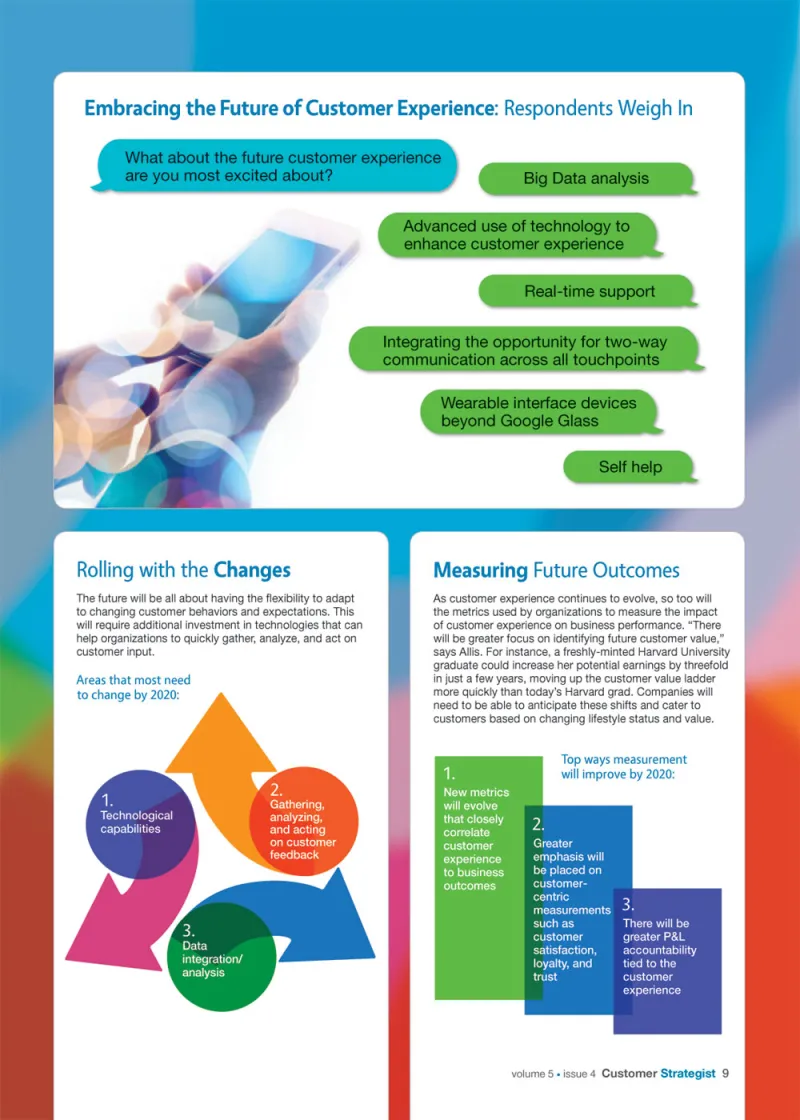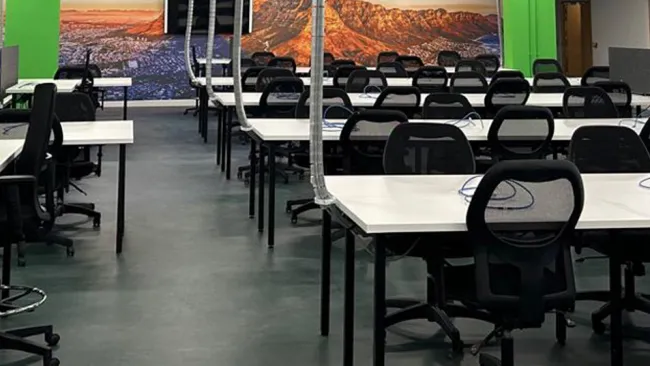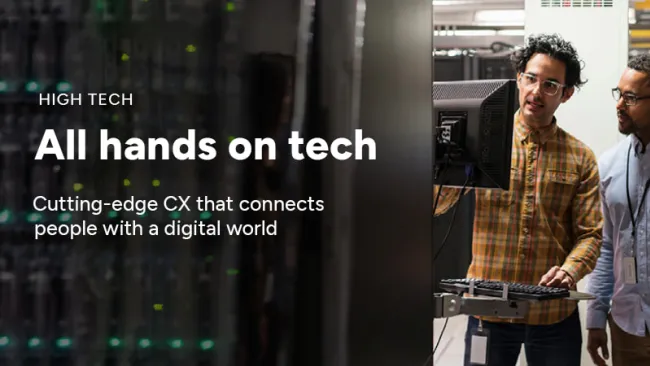So what will the customer experience of 2020 look like? And more importantly, will your company be positioned to deliver an optimal experience?
Based on current predictions, the answer is "no." According to a survey of 73 business leaders conducted by TeleTech, 75 percent anticipate their companies will be "fair" to "poor" in meeting customer needs, preferences, and expectations in 2020. Part of the rationale for this negative self assessment is that nearly one-third of organizations (31 percent) expect they'll have to make improvements in their technological capabilities to respond to changing customer behaviors and expectations within six years.
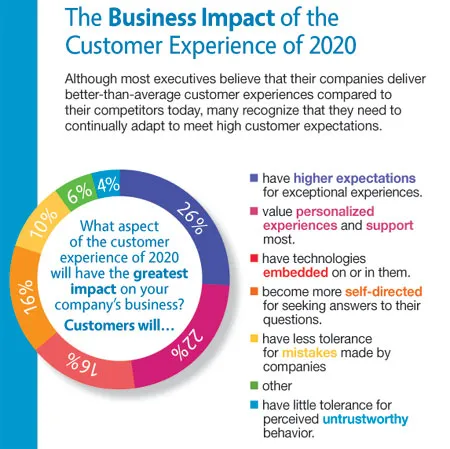
"The customer of the future will be highly empowered and knowledgeable and will price shop in microseconds to see who offers the lowest price," says Taylor Allis, vice president of marketing and product management at TeleTech. He adds that customer loyalty will be dictated by how quickly a company can respond to each customer and personalize the experience across each channel.
Not surprisingly, there is no one standout element of the customer experience that will impact all companies. Increased customer expectations for exceptional experiences (26 percent), followed by advanced personalization (22 percent) lead the pack of areas of greatest potential impact, according to the survey.
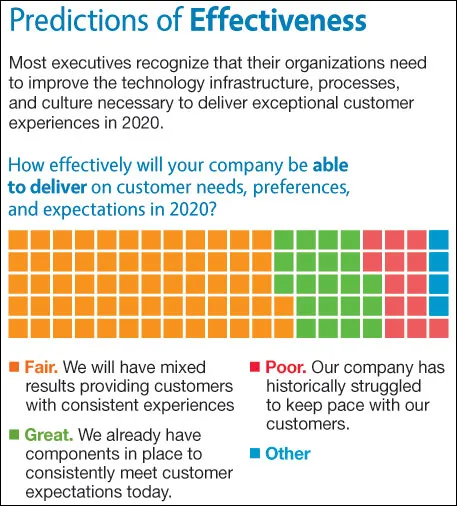
In the near future organizational leaders must act on the detailed profiles of customers based on a holistic look at transactional, behavioral, sentiment, social, and other data that's available about them, says Allis. Decision makers will also need to approach customer strategies creatively to help distinguish their companies in the eyes of customers. They must formulate and deliver experiences that customers aren't yet receiving in a given industry.
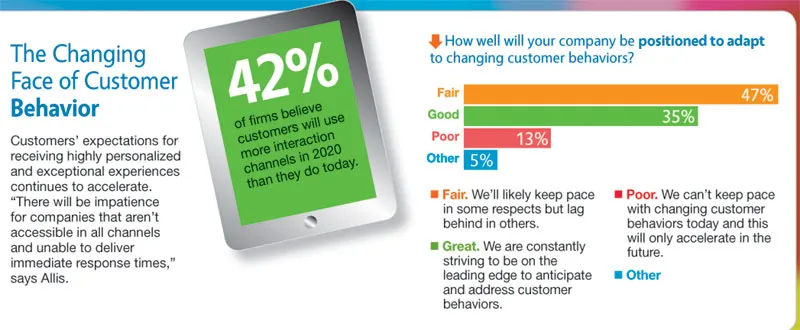
To get there, businesses can tinker with advanced technologies such as virtual touchscreens and predictive search tools, then test these out with trial projects. "These can be piloted in an innovation lab and tested with a small subset of customers to examine the impact on the customer experience and on the business," says Allis. "Give each project team the freedom to explore. If it's a failure, it's no risk to your business. If it's a success, map it to the business and roll it out to one store or one geography at a time."
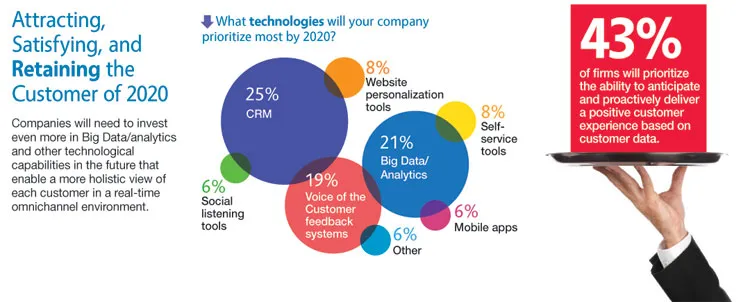
New Channels, New Technologies, New Challenges
The customer of the future not only will behave differently—they'll look different, too. Customers will increasingly use wearable devices—ranging from Google Glass-type sensory devices to the use of embedded body chips and bracelets for personal identification and transactions.
For companies that struggle to support customer experiences in different channels today (mobile, social, web, etc.), the onset of wearable computing and other unknown interaction channels can be frightening. "There will be multiple ubiquitous access points for companies to interact with customers, so companies will need to be able to provide 24/7 support for each of these touchpoints," says TeleTech's Allis.
This is why interaction pilots are critical. In the case of wearable computing, firms can conduct small, iterative pilot projects with a small set of customers to test out support for different types of wearable technologies to determine whether customers want to opt in for location-based notifications and gauge customer interest in interacting through these devices.
